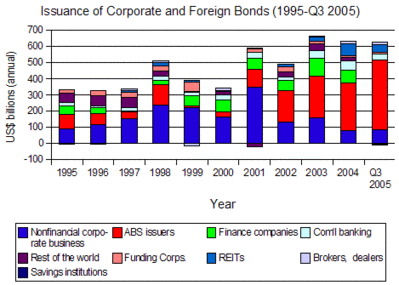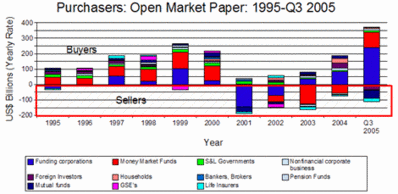Supply Analysis: U.S. Bond Market
by John Schroy filed under Treasuries, Open Market, Agencies, Mortgages, Municipals, Corporate Bonds
An understanding of the motivation of issuers is fundamental in Capital Flow Analysis.
The U.S. bond market may be divided into four types of issuers, with this breakdown over the decade 1995-2004:
- F209. Treasury Bonds (8.9% of bond issues);
- F210. Agency Bonds (39.5% of bond issues);
- F211. Municipal Bonds (6.9% of bond issues); and
- F212. Corporate Bonds (44.7% of bond issues).
Each of these bond classes is governed by different parameters:
- Primary Decision Maker: Who is it that makes the primary decision that results eventually in the issuance of these bonds?
- Lag Between Decision and Issuance: How long is it between the time when the primary decision maker takes action that later results in these bonds being issued, and the actual issuance of the bonds?
Sensitivity to Interest Rates: How much is the primary decision maker influenced by current interest rates before taking the action that leads to the issuance of these bonds?




